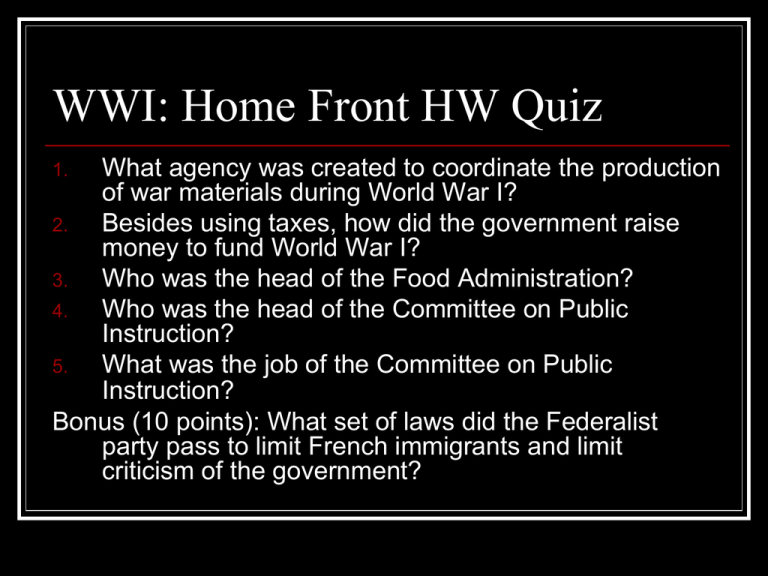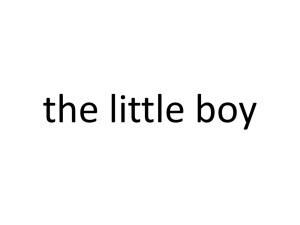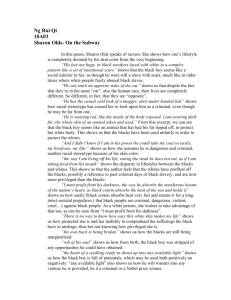WWI: Home Front HW Quiz
advertisement

WWI: Home Front HW Quiz What agency was created to coordinate the production of war materials during World War I? 2. Besides using taxes, how did the government raise money to fund World War I? 3. Who was the head of the Food Administration? 4. Who was the head of the Committee on Public Instruction? 5. What was the job of the Committee on Public Instruction? Bonus (10 points): What set of laws did the Federalist party pass to limit French immigrants and limit criticism of the government? 1. World War I, Part 2: The Home Front Goal 6 and 8 Essential Idea The government expanded its power in order to support the American war effort. Funding the War _______________ was ______________ and used many ______________. One of the challenges of the United States _______________ was to find ways to ______ for the war and maintain its _____________. The government created many new _________ to insure the ____________ did not run out. Turning the United States into a War Machine Agency: War Industries Board Ran by: Bernard Baruch What it managed: Production of war materials War Industries Board How it did it: Told manufacturers what to produce It made sure companies had the needed raw materials It built new factories The Food Administration Agency: Food Administration Run by: Herbert Hoover What it managed: the food supply The Food Administration How it did it: Found ways to conserve food (rationing) for soldiers Encouraged citizens to grow their own food in “victory gardens” Promoted “Wheatless Mondays”, “Meatless Tuesdays”, etc. The Fuel Administration Agency: The Fuel Administration What it managed: coal and oil (energy) How it did it: Introduced daylight savings time Shortened the work week encouraged “Heatless Mondays Funding the War Agency: Congress What it managed: money How it did it: raised income tax and created new taxes ($12 million) Sold Liberty and Victory Bonds, a.k.a. loans to the government ($20 million) Raising Money The National War Labor Board Agency: National War Labor Board Run by: William Taft What it managed: the work force How it did it: Pressured businesses to improve wages and working hours Encouraged unions NOT to strike Supporting the War Women in the Workplace Problem: shortage of workers because men are busy fighting the war Initial solution: hire women! (worked in factories, shipyards, and railroad yards) The Great Migration Why there is still a problem: even with women working, there is still a shortage of workers Next solution: start hiring blacks GREAT MIGRATION- 300,000 to 500,000 blacks leave the South and move to Northern cities to get factory jobs (and, of course, escape Jim Crow laws in the South) Red states lost the most blacks Blue states gained the most blacks Shaping Public Opinion Strategy #1: Propaganda Propaganda- biased information used to influence people Agency: Committee on Public Information (CPI) What it managed: government propaganda Who ran it: George Creel The Committee on Public Information What it did: “sold” the war to the American people using artists, authors, songwriters, entertainers, and movie companies Four minute men- 75,000 public speakers known for giving four minute speeches to support the war “It’s Duty Boy”: Four Minute Men My boy must never bring disgrace to his immortal sires— At Valley Forge and Lexington they kindled freedom’s fires, John’s father died at Gettysburg, mine fell at Chancellorsville; While John himself was with the boys who charged up San Juan Hill. And John, if he was living now, would surely say with me, "No son of ours shall e’er disgrace our grand old family tree By turning out a slacker when his country needs his aid." It is not of such timber that America was made. I’d rather you had died at birth or not been born at all, Than know that I had raised a son who cannot hear the call That freedom has sent round the world, its previous rights to save— This call is meant for you, my boy, and I would have you brave; And though my heart is breaking, boy, I bid you do your part, And show the world no son of mine is cursed with craven heart; And if, perchance, you ne’er return, my later days to cheer, And I have only memories of my brave boy, so dear, I’d rather have it so, my boy, and know you bravely died Than have a living coward sit supinely by my side. To save the world from sin, my boy, God gave his only son— He’s asking for My boy, to-day, and may His will be done. Posters Who is the monster? What does the blood represent? What is the point of the question mark? Who does the woman represent? Who does the gorilla represent? What is the gorilla an allusion to? What propaganda technique is this? Posters “Huns (Germans) Kill Women and Children!” What emotions would this cause? The Most Famous WWI Poster Always pointed at YOU U.S. Propaganda Limiting Free Speech Strategy #2: Pass laws to limit war opposition Law: Espionage Act What it did: made it illegal to help the enemy through spying or sabotage Law: Sedition Act Made it illegal to publically speak against the war The “reds” are communists, who were seen as enemies within the US What does the hammer represent? What is the point of the cartoon? Schenk v. United States Supreme Court Case: Schenk v. United States The issue: Charles Schenk distributed pamphlets saying that people should resist being drafted into the war The ruling: AGAINST Schenk: the government can restrict free speech that creates a “clear and present danger” Schenk v. U.S. Building the Military The First Soldiers: about 2 million Why did citizens sign up? 1. inspired by stories of German atrocities 2. some felt that democracy was at stake Building the Military However, the United States needed more soldiers The law: Selective Service Act What it did: required all men age 21-30 to register for a draft How many troops after the new law? About 5 million http://www.sss.gov/ “New” Soldiers Who? AfricanAmericans Wilson’s Action: Wilson segregated the army so that blacks and whites fought separately Blacks in the Military How are they remembered? They fought with DISTINCTION Women in the Military Who? Women Why significant? World War I was the first American war in which women served How did they serve? Non-combat positions such as clerical work and nursing Helping the Allies Why was America’s entry into World War I significant? It gave the ALLIES much needed STRENGTH AND ENERGY (a huge morale boost)


